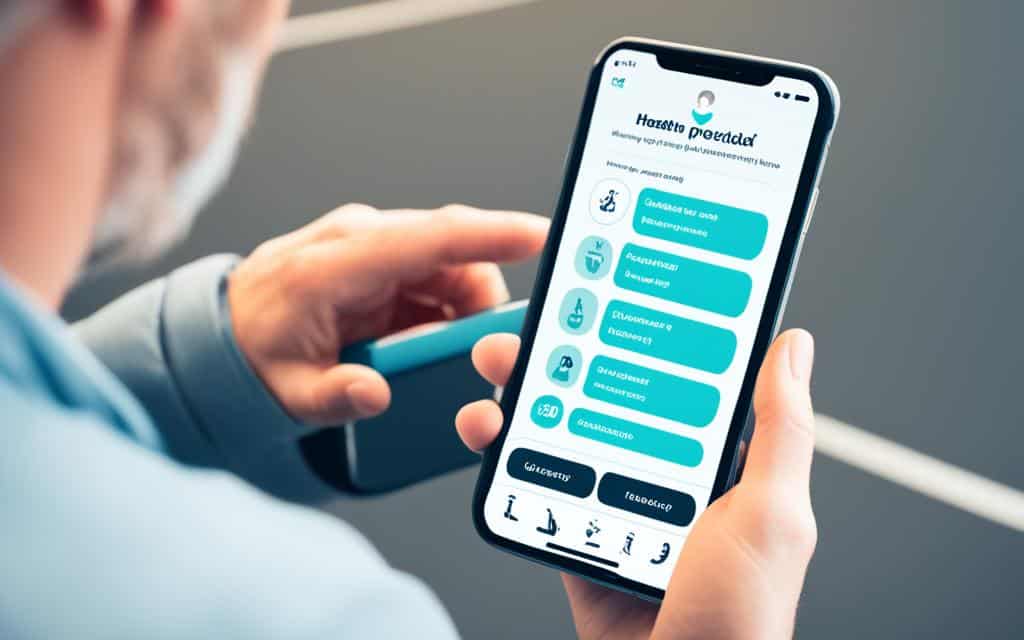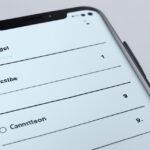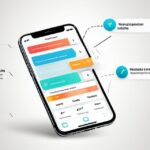Table of Contents
Health apps have revolutionized the way we manage our well-being. With the increasing prevalence of mobile health apps, it is essential to understand the significance of interactive design in promoting user engagement and participation. Design principles that prioritize user interaction can greatly enhance the effectiveness of these apps in empowering individuals to take charge of their health.
By incorporating interactive elements such as competitions, goals, rewards, and avatars, health apps can create a game-like experience that motivates users to actively participate in their health journey. These design strategies not only provide a positive user experience but also foster collaboration among users, promoting a sense of community and support.
During this article, we will explore the importance of interactive design in health apps and how it can encourage user participation. We will delve into the design principles that drive successful user engagement and discuss the impact of prototypicality on app adoption. Additionally, we will investigate user expectations and preferences for gameful designs, providing guidance for developing effective and tailored health apps.
Stay tuned to discover the role of user participation in design processes, as well as the evaluation of gameful designs in improving user engagement and health outcomes. With the right design strategies and user-centered approaches, health apps can truly empower individuals to prioritize and manage their health effectively.
The Impact of Prototypicality on App Adoption
Research has shown that meeting users’ expectations for app features and design is crucial for app adoption and usability. The concept of prototypicality, or the degree to which an app resembles others in its comparative group, significantly affects users’ impressions and evaluations. High-prototypicality apps, which closely resemble top downloaded apps, are more likely to be downloaded and have higher ratings for aesthetics, ease of use, usefulness, and perceived affordances.
Users have shared expectations for specific app features and their placement, such as navigation menus in the top corners and summary graphs in the center. Meeting these expectations through interactive design can improve app evaluations and encourage use.
User Expectations and Preferences for Gameful Designs
Gameful designs, incorporating game design elements into health apps, have been proven to increase user enjoyment and motivation. To develop effective gameful designs, it is crucial to understand user expectations and preferences. Participants in co-design workshops expressed the need for positive user experiences, collaboration, customization options, and rewards that can be exchanged for real-world goods. However, users also emphasized the importance of meaningful and motivating features that do not solely rely on gameful design elements. By incorporating users’ contextualized needs and preferences, health app designers can create engaging and effective gameful designs.
Design Guidelines for Developing Gameful Designs
Designing effective gameful designs requires guidelines that are context-specific and user-centered. Currently, there is a lack of validated frameworks for gameful designs in the health care domain. Most existing guidelines focus on selecting typical gameful elements, such as points, badges, and competitions, without considering the context and users’ preferences. User-centered design processes, which involve active participation from users in the design process, have been identified as crucial for creating successful gameful designs. By prioritising the needs, interests, and requirements of users, designers can develop gameful designs that are engaging, enjoyable, and meaningful.
When developing gameful designs for eHealth and mHealth applications, it is important to consider the specific needs and expectations of the target audience. User-centered design processes should be followed, involving users at every stage of the design process. This approach ensures that the resulting designs align with user preferences, leading to higher levels of engagement and satisfaction.
Key Design Guidelines for Gameful Designs in eHealth and mHealth:
- 1. Understand the target audience: Conduct user research to gain insights into the needs, motivations, and preferences of the users. This information will guide the design decisions and help create a gameful experience that resonates with the users.
- 2. Define clear goals: Clearly define the desired outcomes and objectives of the gameful design. Align the goals with the health-related objectives of the application. This will help create a focused and purposeful experience for the users.
- 3. Provide meaningful feedback: Incorporate feedback mechanisms that provide users with real-time information about their progress and performance. Meaningful feedback helps users track their achievements and encourages them to continue engaging with the app.
- 4. Personalize the experience: Allow users to customize the gameful elements according to their preferences. This can include choosing avatars, selecting themes, or adjusting the difficulty level. Personalization enhances user satisfaction and makes the experience more enjoyable.
- 5. Foster social interaction: Integrate social features that promote collaboration, competition, or both among users. This can include leaderboards, challenges, or virtual communities. Social interaction enhances engagement and encourages users to stay motivated.
By following these guidelines, designers can develop gameful designs that effectively engage users and support their self-management journey in eHealth and mHealth applications.
The Role of User Participation in Design Processes
User participation is vital for creating gameful designs that effectively engage and empower users. By involving users as co-designers through participatory design methods, such as co-design workshops, designers gain valuable insights into user needs, preferences, and ideas. This collaborative approach ensures that gameful designs in mHealth self-management apps are tailored to users’ specific requirements, resulting in higher user engagement and improved health outcomes.
Participatory design methods, such as co-design workshops, provide users with the opportunity to actively engage in various design activities. These workshops foster open communication and collaboration between users and designers, allowing users to directly contribute to the design process. User needs, preferences, and expectations are elicited through brainstorming sessions, discussions, and interactive design exercises.
By actively involving users as co-designers, designers can gain valuable insights and perspectives that would otherwise be overlooked. Users are the experts in their own experiences and understand their needs and preferences best. Collaborating with them throughout the design process ensures that the resulting gameful designs align with their expectations and requirements.
“By involving users as co-designers, designers can gain valuable insights into user expectations and requirements for gameful designs in mHealth self-management apps.”
The co-design workshops encourage users to share their experiences, challenges, and goals. They can provide designers with unique insights into user motivations, which can be crucial for developing effective gameful designs. For example, users may express the desire for rewards and incentives that align with their self-management goals. They may also have preferences for certain design elements, such as visual aesthetics or interaction mechanisms.
By incorporating user inputs and involving them as co-designers, designers can create gameful designs that resonate with users and motivate them to actively engage in self-management. It ensures that the resulting designs address the specific needs and preferences of the target users, increasing the likelihood of user acceptance and sustained engagement with the app.
Ultimately, user participation in design processes plays a critical role in creating effective gameful designs. By actively involving users as co-designers through participatory design methods, designers can harness their knowledge, insights, and preferences to develop gameful designs that promote user engagement and ultimately improve health outcomes.
Applying User Needs and Preferences in Designing Gameful Health Apps
Incorporating user needs and preferences is essential in designing gameful health apps that are engaging and effective tools for self-management. By integrating the requirements identified through participatory design methods, designers can create gameful designs that resonate with users and motivate them to actively engage in their health journey.
When designing gameful health apps, it is crucial to consider user inputs on various aspects, such as competitiveness, rewards, customization, feedback, and collaboration. This ensures that the app aligns with their preferences and expectations, leading to higher user satisfaction and engagement. By incorporating these preferences into the design process, designers can create personalized experiences that cater to the individual needs of users.
However, it is important to note that gameful design elements should not be the sole focus. Designers must also ensure that the app provides meaningful and motivating features that can stand on their own. By combining insights from users with relevant theories and literature, designers can strike a balance between gameful elements and the overall functionality and utility of the app.
By applying user needs and preferences in the design of gameful health apps, designers can create tailored experiences that address users’ specific requirements and enhance their self-management practices.
Incorporating user needs and preferences is essential in designing gameful health apps that are engaging and effective tools for self-management.
Key Considerations for Designing Gameful Health Apps:
- Competitiveness: Provide opportunities for users to compete with themselves or others, fostering engagement and motivation.
- Rewards: Implement a reward system that offers incentives for achieving specific goals or milestones, encouraging continued app usage.
- Customization: Allow users to personalize their app experience by selecting preferences, themes, or avatars, enhancing ownership and engagement.
- Feedback: Provide timely and constructive feedback to users, helping them track their progress and make informed decisions.
- Collaboration: Foster a sense of community and collaboration among users, encouraging knowledge sharing and support.
By considering these key factors and integrating user needs and preferences, designers can create gameful health apps that truly resonate with users, leading to improved self-management and better health outcomes.
Evaluating the Effectiveness of Gameful Designs in mHealth Apps
Evaluating the effectiveness of gameful designs in mHealth apps is crucial for measuring user engagement and assessing their impact on health outcomes. Through empirical studies, researchers have consistently found positive effects of gamified mHealth tools on behavioral outcomes, such as increased physical activity and improved medication adherence.
However, despite these promising findings, the field of gameful design in mHealth apps still faces limitations and methodological constraints that need to be addressed. Additional research is needed to understand the long-term impacts of gameful designs on various health behaviors and outcomes, including overall health management and disease prevention.
By conducting rigorous studies and incorporating user feedback, researchers and designers can refine gameful designs to maximize their effectiveness. This iterative process allows for the creation of evidence-based interventions that effectively promote self-management and ultimately improve health outcomes.
One key aspect of evaluating gameful designs in mHealth apps is assessing user engagement. It is essential to understand how users interact with and respond to different gameful elements within the app. User engagement metrics, such as time spent using the app, frequency of use, and completion of challenges or goals, can provide valuable insights into the effectiveness of the design.
Additionally, researchers should explore the impact of gameful designs on health outcomes beyond mere behavioral changes. This could involve measuring improvements in overall health indicators, such as reduced hospitalizations, improved quality of life, or better disease management.
“The evaluation of gameful designs in mHealth apps is an ongoing process, requiring the collaboration of researchers, designers, and users. By continually assessing user engagement and refining the design based on insights from empirical studies, we can create gameful experiences that truly empower individuals to take control of their health.”
Benefits of Evaluating Gameful Designs:
- Provides insights into user engagement and interaction with gameful elements
- Assesses the impact of gameful designs on health behaviors and outcomes
- Guides the iterative design process to improve effectiveness
- Allows for evidence-based interventions in mHealth apps
By continuously evaluating the effectiveness of gameful designs in mHealth apps, we can drive innovation and enhance the impact of self-management tools. This research contributes to the overall understanding of how gameful designs can effectively engage users and improve health outcomes in the rapidly growing field of mHealth.
Conclusion
In conclusion, interactive design plays a vital role in encouraging user participation and engagement in health apps. By incorporating gameful designs that align with users’ expectations and preferences, health apps can motivate individuals to actively manage their health and improve their overall well-being.
Participatory design processes, such as co-design workshops, allow users to contribute their unique needs, preferences, and ideas, resulting in more user-centered and effective gameful designs. By actively involving users in the design process, health app designers can create tools that truly resonate with users and empower them to take control of their health.
Evaluating the effectiveness of gameful designs and continuously refining them based on user feedback is essential. Through this iterative process, designers can create engaging and impactful tools that promote self-management and positive health outcomes. By embracing collaboration between designers and users, gameful health apps can provide a meaningful and enjoyable experience for individuals seeking to improve their health.
FAQ
What is the role of interactive design in health apps?
Interactive design plays a crucial role in promoting user engagement and adherence in health apps. It involves creating gameful designs that motivate users to actively participate in their health journey.
How does prototypicality affect app adoption and usability?
The degree to which an app resembles others in its comparative group, known as prototypicality, significantly affects app adoption and usability. Apps that closely resemble top downloaded apps are more likely to be downloaded and have higher ratings for aesthetics, ease of use, usefulness, and perceived affordances.
What are the user expectations and preferences for gameful designs in mHealth self-management apps?
Users expect positive user experiences, collaboration, customization options, and rewards that can be exchanged for real-world goods in gameful designs. However, they also emphasize the importance of meaningful and motivating features that do not solely rely on gameful design elements.
Are there guidelines for developing gameful designs in the health care domain?
There is currently a lack of validated frameworks for gameful designs in the health care domain. Most existing guidelines focus on selecting typical gameful elements without considering the context and users’ preferences. User-centered design processes that involve active participation from users are crucial for creating successful gameful designs.
How can user participation influence the design of gameful health apps?
User participation, through methods like co-design workshops, allows users to contribute their needs, preferences, and ideas to the design process. By involving users as co-designers, designers can gain valuable insights into user expectations and requirements for gameful designs in mHealth self-management apps.
What factors should designers consider when applying user needs and preferences in designing gameful health apps?
Designers should consider aspects like competitiveness, rewards, customization, feedback, and collaboration based on user inputs. It is important to create gameful designs that provide meaningful and motivating features on their own, in addition to incorporating gameful design elements.
How can the effectiveness of gameful designs in mHealth apps be evaluated?
Evaluating the effectiveness of gameful designs involves measuring user engagement and assessing their impact on health outcomes. Rigorous studies and continuous refinement based on user feedback are necessary to understand the long-term impacts of gameful designs on health behaviors and outcomes.













